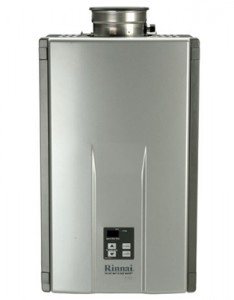 Q: Our family of four lives in a four-bedroom three bath house in Grass Valley, California. Our water source is from a private well. Me and my teenage son and daughter seem to use a lot of hot water. Our current electric tank type water heater is leaking and needs to be replaced. Which type of water heater would be best for us: gas or electric, tank or tankless? The current thinking is that gas tankless water heater would be cheaper to operate. What about the possible increase in gas prices in the next 10 to 20 years? We use LP gas.
Q: Our family of four lives in a four-bedroom three bath house in Grass Valley, California. Our water source is from a private well. Me and my teenage son and daughter seem to use a lot of hot water. Our current electric tank type water heater is leaking and needs to be replaced. Which type of water heater would be best for us: gas or electric, tank or tankless? The current thinking is that gas tankless water heater would be cheaper to operate. What about the possible increase in gas prices in the next 10 to 20 years? We use LP gas.
A: The cost of energy is almost always in the news and historically has never decreased in price for any extended period of time. I think we can expect the costs of energy to rise in the next 20 years. The costs of electricity vary from state to state. The future may well depend on more solar- and wind-powered sources as our natural resources dwindle.
The Energy Information Administration (EIA) estimates that there are 2,587 trillion cubic feet (Tcf) of recoverable natural gas in the United States. That’s a large number, and considering the annual use of natural gas in America for 2009 was 22,738 billion cubic feet, that means we have a 113-year supply of a nonrenewable resource. That is if we use it wisely.
With that said, a standard electric water heater is more efficient than a standard gas heater, but will cost more to operate over time. Leaving out geothermal, heat-pump, and solar water heaters, the tankless gas water heater would be my choice as far as energy conservation and operation costs; however, the initial expense of installation will be two to three times that of a standard tank type water heater.
When installing a tankless water heater, consider:
— The size and location of gas piping to the unit — in most cases, some or the entire gas pipe to the tank will need to be larger depending on gas pressures and how many gas appliances are connected to the main gas pipe.
— The flow rate of the water supply — a good tankless heater will heat at a rate of six to nine gallons per minute, enough for three full showers. A lot of manufacturers advertise a 10-to-11-minute flow rate, but that may be pushing the expectations of the unit. But it all depends on the in-coming water temperature. You can get a lot more usable hot water in the summer months compared to winter.
Do not cut corners on the cost of the unit. It’s better to select a higher gallons-per-minute flow rate than to select one that simply satisfies your current needs. Plus this is something that should last you 20 years or more. It’s a safe investment to spend a couple of extra hundred dollars now.
